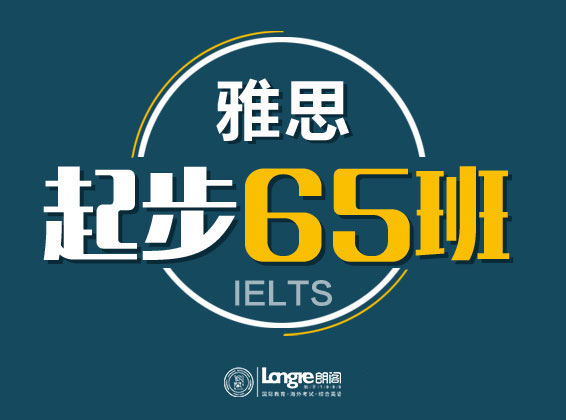|
P1 睡眠的区别 P2 面部表情 P3 有关味觉的书评 朗阁讲师点评 1. 本场考试的难度正常。 2. 整体分析:涉及社会科学类(P1)、社会科学类(P2)、文学评论类(P3) 本次考试考察2篇旧题,从题型组合来看非常常规。**篇考察某部落人与现代人睡眠习惯的不同,题型是常见的判断题+填空题。第二篇讨论面部表情(facial expressions),考察段落信息配对+特殊词配对题+填空题。第三篇有关书评的文章较难,阅读比较晦涩,耗时较长。需要注意考试的3篇文章难度并不一定是递进的,建议考生拿到试卷先浏览一下全文,调整自己的做题顺序,从简单的文章做起。 3. 部分答案及参考文章: Passage 1:睡眠的区别 题型: 判断题 +填空题 参考答案如下: 1.TRUE 2.NOT GIVEN 3.FALSE 4.TRUE 5.energy 6.summer 7.short 8.fires 9.sunrises 10.temperature 11.sleeplessness 12.overweight 13.hearts Passage 2:面部表情 题型: 段落信息配对+特殊词配对题+填空题 参考文章如下: A Facial expressions are a form of non-verbal communication, which make up a large part of our daily communication. By facial movements, we can suggest volumes of information without ‘speaking any words’. They are a primary means of conveying social information among humans but are also found in most other mammals and a few other animal species. Facial expressions and their significance in the perceiver can, to some extent, vary between cultures with evidence from descriptions in the works of Charles Darwin. Understanding facial impressions is of great importance, and also, some essential elements should be taken into account when people interpret the impressions. B Facial expressions are closely tied to emotions. Expressions are configurations of different small muscle movements in the face that show an individual’s discrete emotional states and a vast amount of cognitive information. A number of studies have proved that facial expressions are viewed as one of the best measures of emotional response. Sometimes words do not necessarily coincide with emotions, but the face might betray a person’s actual feelings. At the same time, the close link between emotions and expressions can also work in the other direction; it has been observed that voluntarily assuming an expression can actually cause the associated emotion. C Some expressions like anger and extreme contentment can be accurately comprehended even between members of different species. Others, however, are hard to interpret even in familiar individuals. For instance, disgust and fear can be tough to distinguish. Because faces have only a limited range of movements, expressions rely upon fairly slight differences in the proportions and relative positions of facial features, and reading them requires considerable sensitivity to some. Meanwhile, one’s life experiences, beliefs and conceptual knowledge will have an influence on how he deciphers the facial expressions. D Also, a person’s eyes reveal much about how they are feeling or what they are thinking. Research by Boston College professor Joe Tecce suggests that stress levels are reflected by blink rates. He supports his findings with statistics on the relation between the blink rates of presidential candidates and their success in their races. Tecce claims that the faster blinker in the presidential debates has lost every election since 1980, which seems interesting. However, it is important to recognise that non-verbal communication is multi-channelled, and focusing on only one aspect is biased. Nervousness can also be measured by examining each candidate’s perspiration, eye contact and stiffness. E As Charles Darwin, the first person who pointed out that the facial expressions of particular emotions were universal, noted in his book The Expression of the Emotions in Man and Animals: ‘The young and the old of widely different races, both with man and animals, express the same state of mind by the same muscle movement.’ Still, up to the mid-20th century, most anthropologists believed that facial expressions were entirely learned and could therefore differ among cultures. Studies conducted in the 1960s by Paul Ekman eventually supported Darwin’s belief to a large degree. F Ekman’s opinion, which was contrary to that of some anthropologists including Margaret Mead, showed that facial expressions of emotions are not culturally determined but universal across human cultures. During the period between 1967 and 1968, Dr. Ekman travelled to Papua New Guinea to investigate the non-verbal communication behaviours of the South Fore people. If the South Fore tribe, a remote and primitive one, could interpret the facial expressions as their western counterparts, we would gain significant evidence of the universality of facial expressions. Subjects, including 189 adults and 130 children from a very isolated population, as well as 23 members who lived in a less-isolated lifestyle, were shown three pictures (two for children) of facial expressions and then asked to match those pictures to three different scenarios that described particular emotions. G It was discovered that the isolated South Fore people could identify emotions with the same accuracy as the less-isolated control group, but the study displayed some problems including the fact that both fear and surprise are constantly misidentified. He also drew a conclusion that certain facial expressions correspond to particular emotions and cannot be covered, no matter what the cultural background is, and regardless of whether or not the culture has been isolated or exposed to the mainstream. H Expressions Ekman found to be generally recognised included those indicating anger, disgust, fear, joy, sadness and surprise (note that none of these emotions has a definitive social component, such as shame, pride or Schadenfreude). Findings on contempt (which is social), an expression which can occur with or without a hint of small muscle motions, are less clear, though there is at least some preliminary evidence that this emotion and its expression are universal. This may suggest that the facial expressions are largely related to the mind, with each part of the face expressing a particular emotion. Passage 3:有关味觉的书评 题型:单选题+判断题+句子完成配对题 参考答案如下: 27.A 28.B 29.D 30.A 31.A 32.C 33.YES 34.NO 35.YES 36.NOT GIVEN 37.C 38.E 39.A 40.F 具体文章待确认 考试建议 1.从已知信息来看,阅读速度依旧是影响考生得分的关键。同时,***近考试常常考察选择题型,该题型相对来说对细节要求更高,耗时更长。如果平时烤鸭没有太关注选择题的话,可以参考练习10-4-3,11-2-3,11-4-2,12-3-3,12-4-2,13-1-3。书评文章可参考17-3-3。下场考试,烤鸭们还是注意首篇出现填空+判断的篇章。第二篇注意出现配对题相关的搭配。课下练习注意时间分配合理,熟练掌握各个题型和篇章搭配类型的定位方法。同时,下场考试需注意段落大意配对题型(List of Headings),同时还需注意常见段落结构如何区分主次信息,抽象选项和原文信息如何识别出对应点。填空题除了高频直接填空外,仍需关注选词填空。 3. 重点浏览2018到2022年机经。 |
文中图片素材来源网络,如有侵权请联系删除












